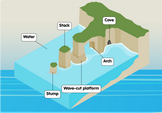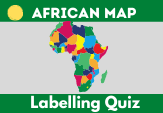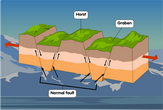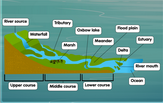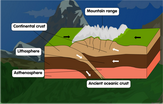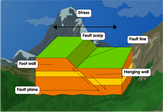Interactive Canadian map for kids
Canada is among the world’s largest countries, yet very few people live in its pristine but untamed land. It touches three oceans on three sides – to the west, the northern Pacific Ocean, to the east, the Atlantic, and to its north, the frigid seas of the Arctic. Only a quarter of Canadians eke out a living in the wilderness; the rest live in the large urban settlements along its lakes and shores.
Dive Deep into Geography with Our "Label the Map of Canada" Interactive Exercise
As educators constantly seek innovative methods to make learning both fun and effective for K-12 students, interactive tools are making a noticeable impact. One such tool that's making waves in the educational community is the 'Canadian map' interactive exercise. Specifically designed for students to 'label the map of Canada', this dynamic exercise fosters both engagement and in-depth understanding of Canadian geography.
Understanding the "Label the Map of Canada" Exercise
This exercise isn't just another digital rendition of Canada's map. Instead, it's an interactive platform where students can drag and drop labels into specific regions, and get instant feedback on their labeling accuracy of the Canadian map. It's about challenging their existing knowledge, correcting misconceptions, and providing a hands-on approach to understanding Canada's provinces, territories, and major geographical features.
Why Choose an Interactive Approach?
Incorporating 'interactive exercises' into the learning journey offers numerous benefits:
Engagement: Students, especially of younger age groups, are more inclined to participate actively when the learning module is interactive and colorful.
Instant Feedback: Immediate corrections and praises ensure students understand their mistakes and learn from them on-the-spot.
Self-Paced Learning: Such exercises allow students to learn at their own pace, making multiple attempts until they master the task.
Integrating the Exercise into Classroom Activities
The 'label the map of Canada' interactive tool isn't just for individual tasks; it can be seamlessly incorporated into group activities and classroom challenges. Here are a few ways teachers can utilize it:
Timed Challenges: Set a timer and see which student or group can accurately label the most regions in the shortest time.
Discuss and Label: After discussions on Canadian geography, use the exercise as a recap tool, allowing students to label as the class collaborates and discusses.
Homework Tasks: Assign the interactive exercise as a fun homework task, allowing students to practice and reinforce their knowledge at home.
Expanding Beyond Just Labeling
While the primary function of this tool is for students to 'label the map of Canada', its interactive nature offers room for expansion. Teachers can use it as a starting point to delve deeper into individual provinces, discussing culture, history, and significant landmarks of each region.
Conclusion
Geography lessons come alive when students are given tools that allow them to interact, explore, and challenge their knowledge. Our 'Canadian map' interactive exercise is not just a tool but a comprehensive learning experience. By encouraging students to 'label the map of Canada', we're fostering a deeper connection with the country's geography, ensuring the knowledge sticks for years to come. Join us in making geography lessons more vibrant and effective!
About Canada
The country is organized into ten official major provinces and a few smaller provinces. It also features three territories – the Yukon, Nunavut and the Northwestern Territories – where a sizable portion of Native Canadians reside.
We can categorize Canada’s provinces and territories into five main sub-regions. The Northern Territories, quite aptly, are composed of the aforementioned three territories. The West Coast Pacific region is formed only by British Columbia, which straddles Canada’s entire Pacific shoreline.
East of British Columbia, we can locate the Prairie Provinces of Alberta, Saskatchewan and Manitoba. Further east are the large provinces of Ontario and Quebec. These two form the Central Canada region.
Lastly, we have the Atlantic region, where we can find Newfoundland and Labrador, Prince Edward Island, Nova Scotia and New Brunswick.
Use this interactive Canadian map for kids as a convenient and detailed study guide for learning about the provinces and geography of this chilly, but enchanting land.

